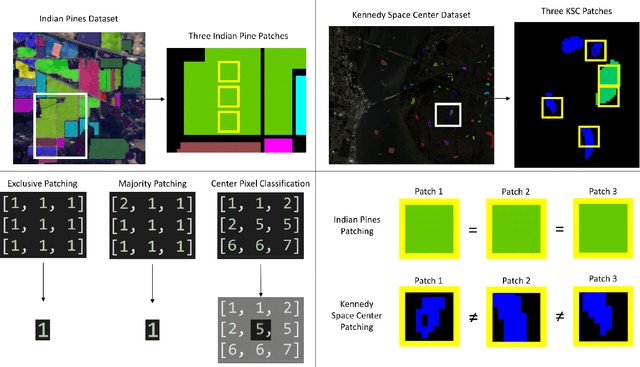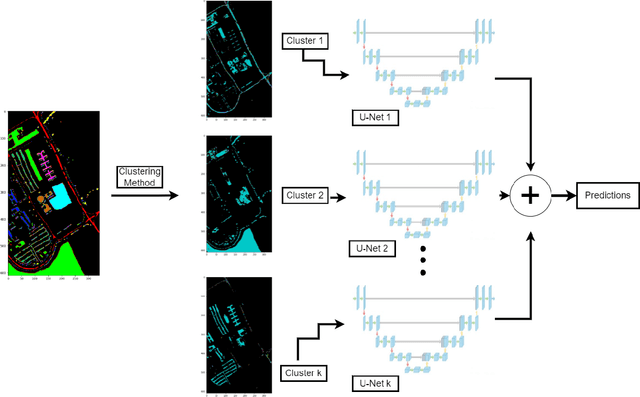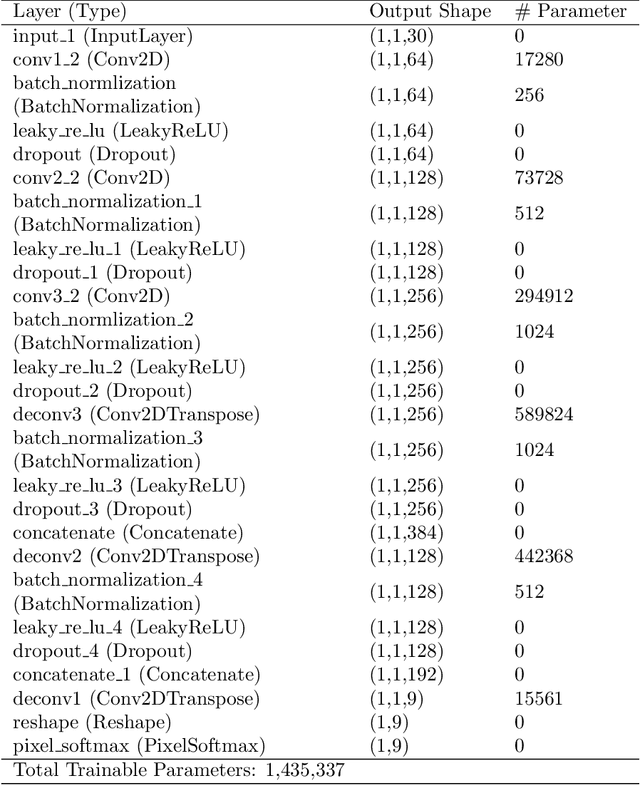Nicholas Soucy
Improving Hyperspectral Adversarial Robustness using Ensemble Networks in the Presences of Multiple Attacks
Nov 01, 2022Abstract:Semantic segmentation of hyperspectral images (HSI) has seen great strides in recent years by incorporating knowledge from deep learning RGB classification models. Similar to their classification counterparts, semantic segmentation models are vulnerable to adversarial examples and need adversarial training to counteract them. Traditional approaches to adversarial robustness focus on training or retraining a single network on attacked data, however, in the presence of multiple attacks these approaches decrease the performance compared to networks trained individually on each attack. To combat this issue we propose an Adversarial Discriminator Ensemble Network (ADE-Net) which focuses on attack type detection and adversarial robustness under a unified model to preserve per data-type weight optimally while robustifiying the overall network. In the proposed method, a discriminator network is used to separate data by attack type into their specific attack-expert ensemble network. Our approach allows for the presence of multiple attacks mixed together while also labeling attack types during testing. We experimentally show that ADE-Net outperforms the baseline, which is a single network adversarially trained under a mix of multiple attacks, for HSI Indian Pines, Kennedy Space, and Houston datasets.
The Stanford Drone Dataset is More Complex than We Think: An Analysis of Key Characteristics
Mar 22, 2022



Abstract:Several datasets exist which contain annotated information of individuals' trajectories. Such datasets are vital for many real-world applications, including trajectory prediction and autonomous navigation. One prominent dataset currently in use is the Stanford Drone Dataset (SDD). Despite its prominence, discussion surrounding the characteristics of this dataset is insufficient. We demonstrate how this insufficiency reduces the information available to users and can impact performance. Our contributions include the outlining of key characteristics in the SDD, employment of an information-theoretic measure and custom metric to clearly visualize those characteristics, the implementation of the PECNet and Y-Net trajectory prediction models to demonstrate the outlined characteristics' impact on predictive performance, and lastly we provide a comparison between the SDD and Intersection Drone (inD) Dataset. Our analysis of the SDD's key characteristics is important because without adequate information about available datasets a user's ability to select the most suitable dataset for their methods, to reproduce one another's results, and to interpret their own results are hindered. The observations we make through this analysis provide a readily accessible and interpretable source of information for those planning to use the SDD. Our intention is to increase the performance and reproducibility of methods applied to this dataset going forward, while also clearly detailing less obvious features of the dataset for new users.
CEU-Net: Ensemble Semantic Segmentation of Hyperspectral Images Using Clustering
Mar 14, 2022



Abstract:Most semantic segmentation approaches of Hyperspectral images (HSIs) use and require preprocessing steps in the form of patching to accurately classify diversified land cover in remotely sensed images. These approaches use patching to incorporate the rich neighborhood information in images and exploit the simplicity and segmentability of the most common HSI datasets. In contrast, most landmasses in the world consist of overlapping and diffused classes, making neighborhood information weaker than what is seen in common HSI datasets. To combat this issue and generalize the segmentation models to more complex and diverse HSI datasets, in this work, we propose our novel flagship model: Clustering Ensemble U-Net (CEU-Net). CEU-Net uses the ensemble method to combine spectral information extracted from convolutional neural network (CNN) training on a cluster of landscape pixels. Our CEU-Net model outperforms existing state-of-the-art HSI semantic segmentation methods and gets competitive performance with and without patching when compared to baseline models. We highlight CEU-Net's high performance across Botswana, KSC, and Salinas datasets compared to HybridSN and AeroRIT methods.
 Add to Chrome
Add to Chrome Add to Firefox
Add to Firefox Add to Edge
Add to Edge